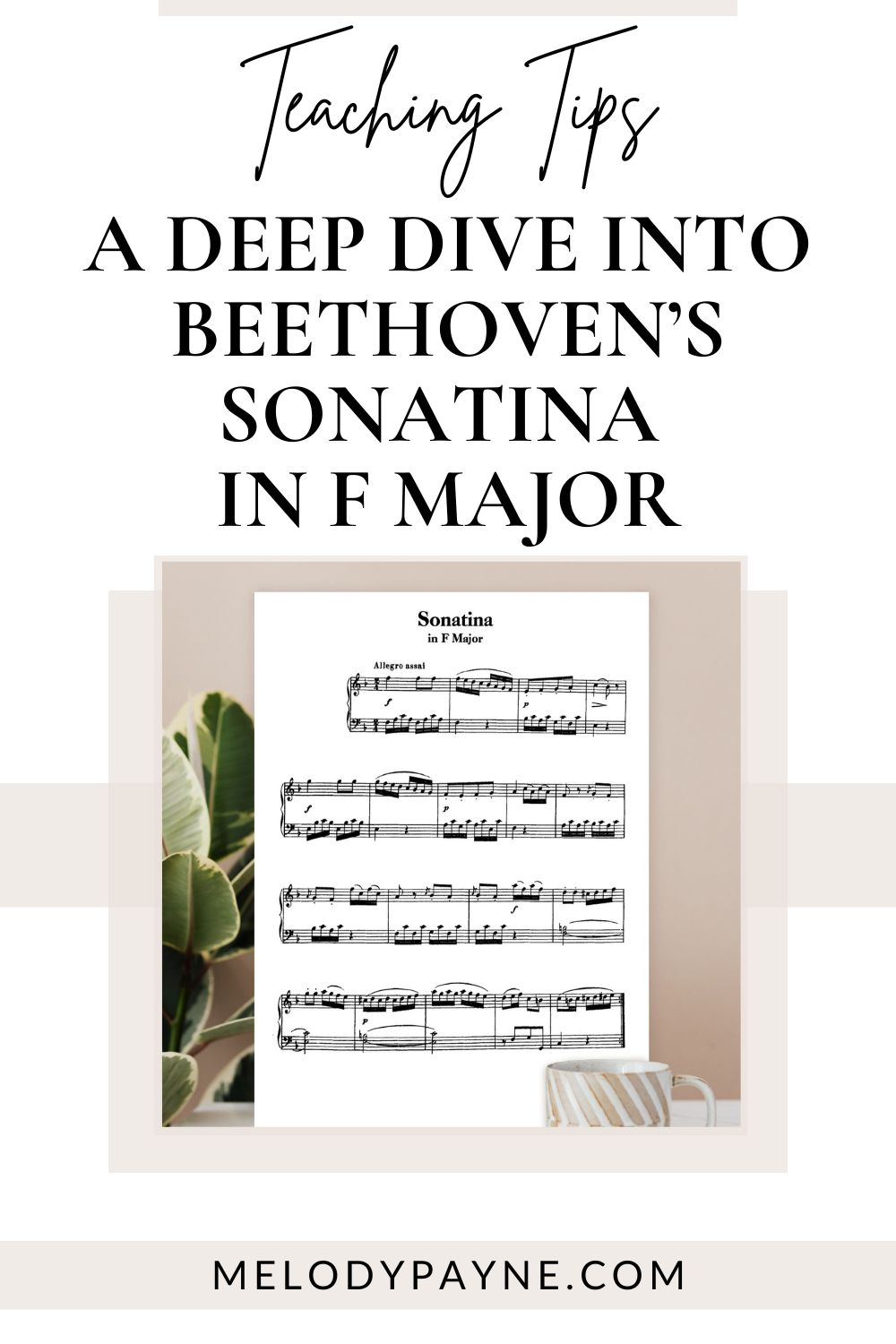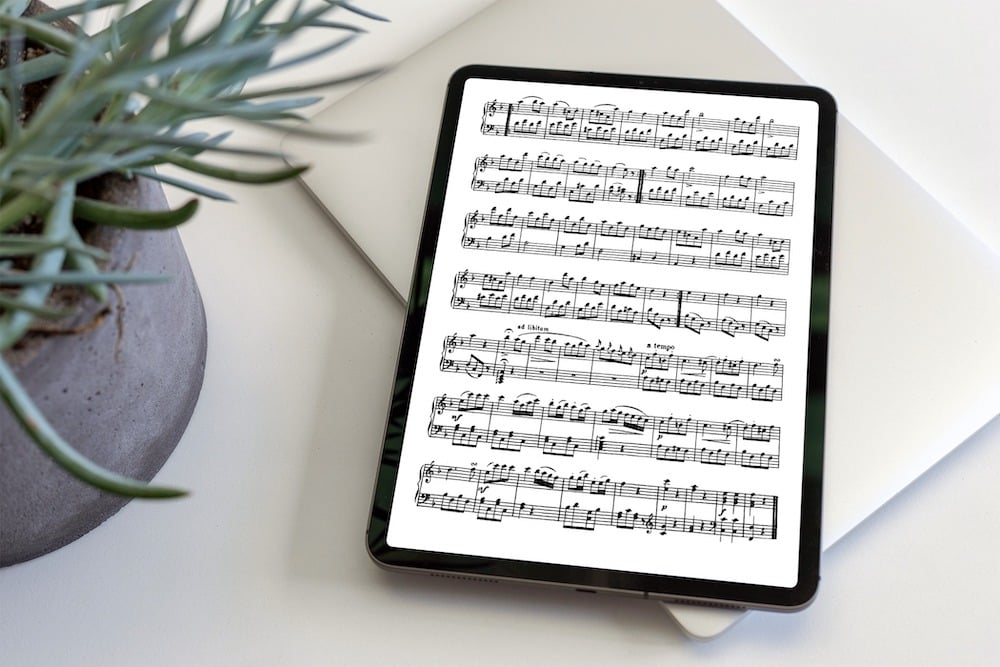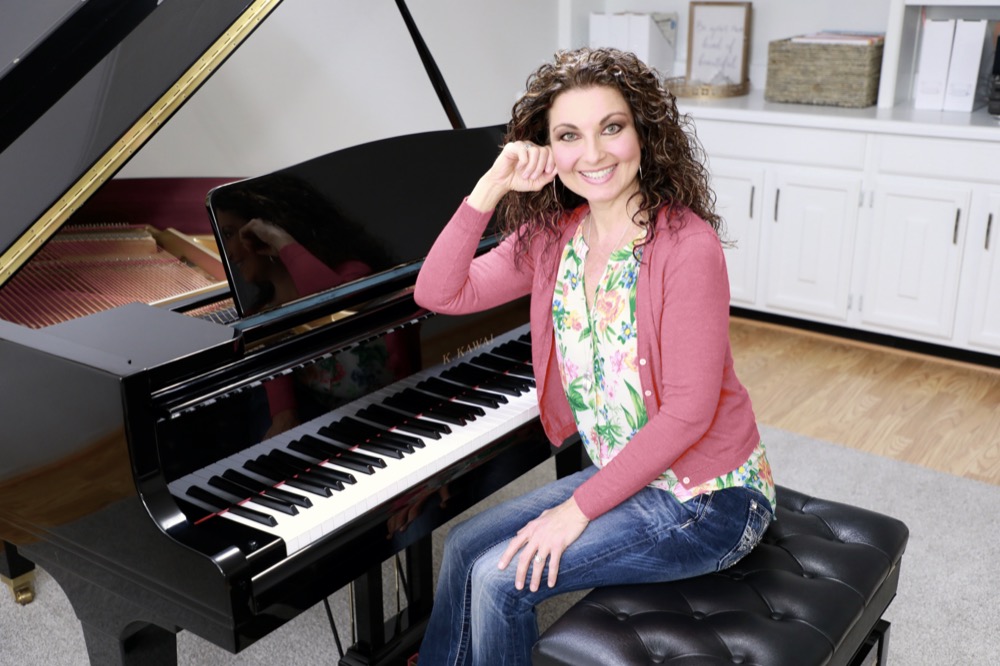A Deep Dive into Sonatina in F Major by Beethoven
This post may contain affiliate links. If you purchase something through an affiliate link, I will receive a small commission at no cost to you. For more information, read the disclosure statement here.

Hello teachers! Melody was so kind to invite me to write a second post for her blog. In my previous post, I took a deep dive into Schubert’s intermediate-level Waltz in B minor, D.145/Op.18, No.6.
Below I will apply this same framework to a favorite student piece – Ludwig van Beethoven’s Sonatina in F Major, Anh.5, No.2.
How to begin teaching Sonatina in F Major by Beethoven
When approaching any piece of intermediate historical repertoire, my first question is very practical: what technical features will be difficult for my student?
How can I help them navigate the challenges of simply playing this piece in their first few weeks of practice?
Frankly, Beethoven did not write anything that is easy. This Sonatina is an exception in that it is truly playable by a mid-intermediate student and can prepare a student for his easiest Sonatas, such as Op.49, No.2.
Technical Features of Sonatina in F Major by Beethoven
Regarding technique, this piece requires comfort with scales and chords in the key of F major, and students should know these before they learn a piece such as this.
I teach my students to use rotation in the left hand at measures 3, 7, 11, etc. The right hand similarly gets to experience rotation on broken intervals creating a C major chord at measure 43.
The tempo is marked Allegro assai, and students ultimately do need to be able to play all of those sixteenth notes quickly and lightly to effectively communicate the character of the piece.
Another more interesting aspect of technique required for Sonatina in F Major by Beethoven is the articulation. I firmly believe that articulation is one of the primary ways that we can play music from this time period expressively.
Staccatos should be light and crisp, and slurs should be observed, along with a gentle lift (or hand “breath”) between the slurs.
Most students (mine included!) do not observe articulations as much or as well as I would like them to.
It takes a very detail-oriented outlook to see every articulation marking in a score, and many students simply do not take the time to observe them all, nor do they exaggerate the articulations enough for a listener to actually hear them.
It’s worth noting as well that various editions will contain different articulation markings, particularly in pieces like this that the composer did not publish in his lifetime. In the video below, I discuss one issue with articulation in this piece, so do check that out.
Key Musical Characteristics of Sonatina in F Major by Beethoven
My second, and more fascinating question is: what are the key musical characteristics of this piece?
What makes it unique? What would an audience member remember about it after hearing it once? And is there historical context from the time period or biographical information about the composer that informs what I think is the main idea of the individual piece?
I want to be sure my students are clear on this so that they can play expressively and allow their listeners to hear those main features.

Musical Form of Sonatina in F Major by Beethoven
Besides the light-hearted, fast movement in this piece, I believe that the most significant feature is the use of sonata-allegro form, and how Beethoven chose to navigate the form in this composition.
I believe that any student capable of playing this level of repertoire is also capable of knowing the terms exposition, development, and recapitulation. I tell my students that recapitulation is my favorite music word – it has so many syllables!
Formal Analysis of Sonatina in F Major by Beethoven
If you do not feel comfortable doing a lot of formal analysis on sonatas and symphonies, then let me share a little tip – sonatinas are a great place to start.
I know I studied this form at conservatory, but it wasn’t until I taught many, many sonatinas in my piano studio that I felt like I had unlocked the understanding that allowed me to quickly find the various sections and themes.
That understanding in turn has helped me and my students to learn (and memorize!) more efficiently and effectively.
Sonata-allegro form should generally operate like this:
- Exposition: first theme in the tonic, second theme in the dominant
- Development: exploration of keys, using these themes as subject matter
- Recapitulation: first theme in the tonic, second theme in the tonic
- Coda (optional)
I tell my students that I often think composers like Beethoven, when composing a sonata or sonatina, thought to themselves, “How creative and amazing can I make this – while still abiding by the framework?”
(Of course, I have no idea if Beethoven actually thought this way! But it’s a fun imaginary thought.)
Therefore, we should always be on the lookout for times when they masterfully develop a really simple theme, slightly alter the formula for a creative twist, show great skill in masking a modulation, or do anything else that is compositionally remarkable.
Do all composers follow sonata-allegro form?
The truth is that many composers do not exactly follow the formula.
This is especially true in sonatinas, which are supposed to be lighter, or at the very least, shorter, than sonatas.
Most early-intermediate to mid-intermediate sonatinas have very short development sections.
Some only have one theme (as opposed to the standard two).
Some do not modulate to the dominant in the exposition, but stay in the tonic, meaning that the exposition and recapitulation are identical.
Even Beethoven didn’t always follow the formula
A closer look at the Sonata in F Major by Beethoven reveals that he makes two alterations, or surprise twists, to this form in the F major sonatina.
First, measure 9, which I believe to be the second theme, begins in the tonic. He manages somehow within that section to modulate to C major (the dominant), so the section does end in the correct key.
The more noticeable twist is that Beethoven altogether omits the first theme from the recapitulation.
He moves from the end of the development at measure 51 into the second theme. It’s in the tonic key again (just like measure 9), but of course, this time, it stays in the tonic so that the movement can appropriately end in F major.
Why this omission? Well, it’s also notable that the development of this sonatina is quite long. In a piece where the exposition lasts only 18 measures, the development is 31 measures long!
He also includes an 11-measure coda, as if he couldn’t contain himself from developing just a bit more. So, perhaps he intentionally kept the recapitulation short to keep the whole piece from growing to an extravagant size.

Developments in Beethoven’s Compositions
Beethoven’s piano sonatas often have very long developments, and I do believe that motivic development is his greatest gift.
This is clearly seen in his famous Fifth Symphony where he uses that tiny opening motive of only two pitches and develops it into over 7 minutes of masterful symphonic writing.
I do not think it is too much to ask of our intermediate students to recognize the skill with which he takes tiny little fragments of music and crafts them into intricate, amazing works.
Therefore, we should highlight this aspect of his writing for our students and encourage some very simple analysis.
Thoughts About Beethoven’s Sonatas
Before I sign off, a quick word about Beethoven’s sonatas: They are quite difficult!
Many less-experienced teachers make the mistake of assigning these well-loved works, such as the Moonlight, Pathetique, or Tempest Sonatas, to students who are not adequately prepared or able to handle the technical and musical challenges therein.
No student should embark upon learning a Beethoven sonata without a significant amount of preparation.
That is one of the reasons that I love this sonatina so much; it is attainable at the intermediate level, and students can still take pride in the fact that they are playing a masterful composition by Mr. Beethoven himself.
How to Teach Sonatina in F Major by Beethoven
Analysis of form and discussion of musical characteristics can only go so far in written form. To that end, I hope you will enjoy my video here offering more thoughts on how to teach this lovely piece, Sonatina in F Major by Beethoven.

How to Teach the Final Movement of Sonatina in F Major by Beethoven
If you enjoyed the first video, I do also have a video covering the second (and final) movement of Sonatina in F Major by Beethoven. You can watch that here:

Where to find Sonatina in F Major by Beethoven
Download a public domain copy of Sonatina in F Major by Beethoven on IMSLP.
More blog posts to help you in teaching…
Do you only have beginning piano students and aren’t ready to embark on Sonatina in F Major by Beethoven?
Here are some blog posts for beginner level piano students:
Don't miss out!
Follow on Facebook and Instagram, join the best Facebook group for piano teachers, and subscribe to the newsletter to get helpful teaching tips, resources, and tutorials delivered straight to your inbox every week.
Janna Williamson
Janna Williamson
Welcome!

Hi! I’m Melody Payne, a pianist and piano teacher, educational resource author, a fun-loving wife to the most wonderful and talented hubby I could ask for, and a lifelong learner who loves to share. I want to make your life as a music teacher easier by writing and sharing helpful and relevant music teaching articles, and by creating educational resources with your very own students in mind. If you are a parent who wants to enroll your child in piano lessons, I’d love for us to get started building those skills that can give your child a lifetime of musical enjoyment!


This Post Has 2 Comments
Clearly stated concepts in a language students can grasp easily. All teachers should include discussions of form as a natural part of studying a piece. Also, It becomes in integral aid to memorization.
I agree 100%! Thank you so much for sharing, Annette!